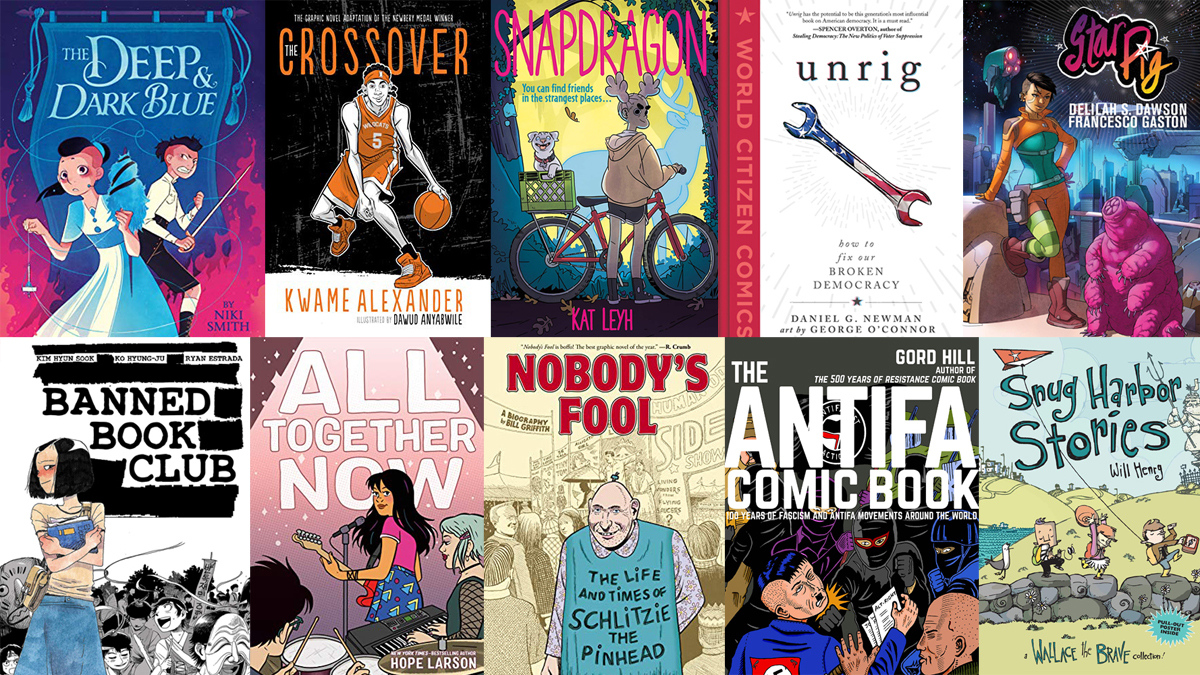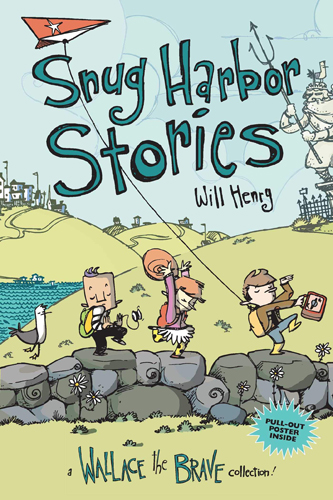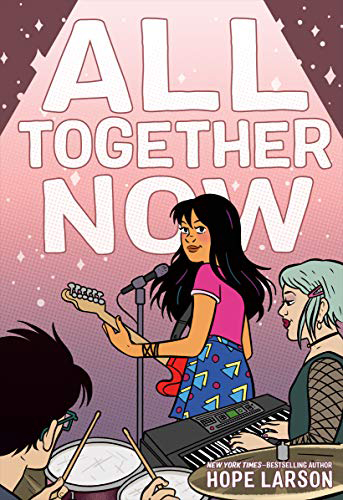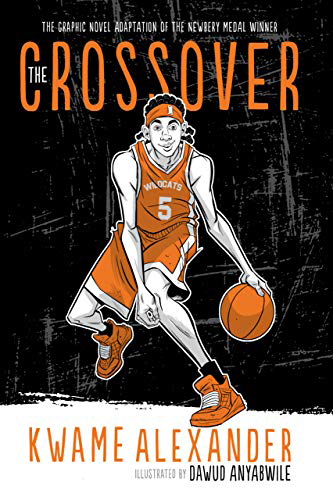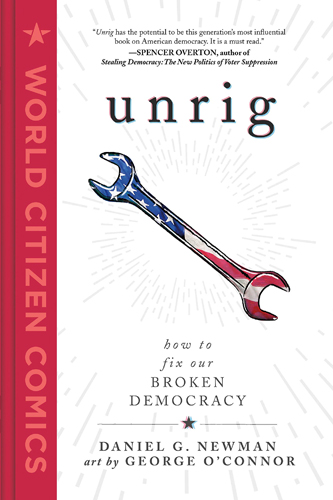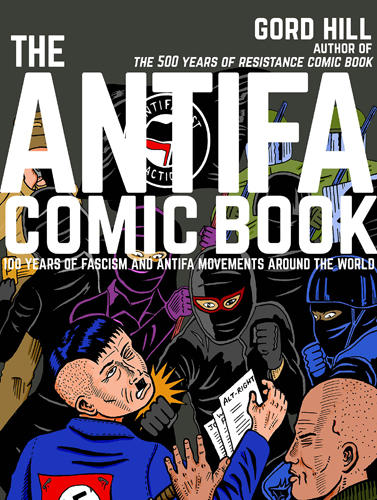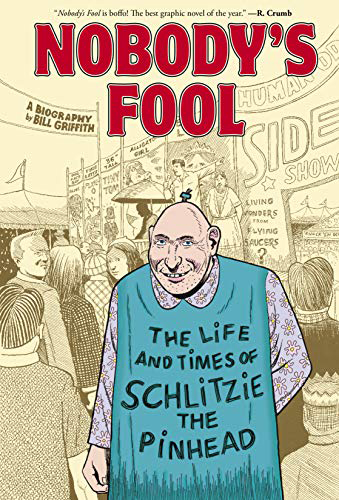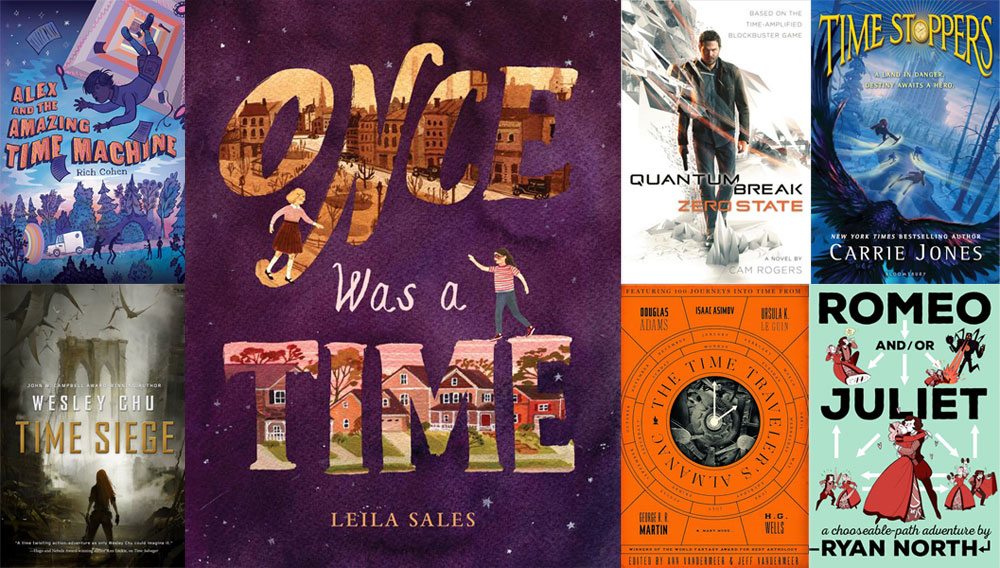Whew. It’s been quite some time since my last Stack Overflow column, and a lot of things have happened since then. I managed to write up Asian-Pacific American Heritage Month for May, but missed Mother’s Day. I realized I hadn’t finished reading the set of books to write a Pride Month post for June, but then after George Floyd’s death, I thought it might be worth including more books from Black writers or featuring Black characters. It was also the end of the school year, which is typically when I write up some books for summer reading, or activity books for kids. This Friday was Juneteenth, and it seems like this year more people are paying attention (or just learning about it). And now we’ve just passed Father’s Day, which is of course a holiday that has some significance to a site called GeekDad.
The truth is, I’ve spent a lot of this month glued to my phone rather than reading books. A lot of it is, I admit, doomscrolling, but I’ve realized how uninformed I am about a lot of things. I’ve been seeking out more Black voices to follow and amplify on Twitter, and I’ve also been trying to keep up with what’s happening with the various protests around the nation and around the world (with some particular attention to things here at home in Portland and up in Seattle). I’m reading a lot about policing, slavery, voting, economics, and K-pop fans. It’s a weird world we’re living in, and I’ve been trying to take in as much of it as I can. (Another unrelated factor is simply that we’ve been doing some server work on GeekDad, usually on the weekends when I typically sit down to write my Stack Overflow columns.)
So, today’s Stack Overflow is maybe a bit of a jumble, but that probably reflects the state of my brain pretty accurately. These are arranged in order of target age.
Snug Harbor Stories: A Wallace the Brave Collection by Will Henry
This collection of comic strips continues the adventures of Wallace, his timid friend Spud, and the fearless Amelia, in their little fishing town. I mentioned back in March (when I read the first collection) that it reminds me a little of Calvin & Hobbes, in that it focuses on a kid having adventures, though without the imaginary tiger friend. Wallace is a bit on the obnoxious side, not necessarily the most attentive student … so while I did have some laughs reading through it, I also wondered why there are so many comic strips about mediocre white boys, and why they get to be the main characters so often.
Snapdragon by Kat Leyh
Snapdragon (“Snap” for short) doesn’t believe the rumors about the old witch who lives out in the creepy house: that she fed her eye to the devil, or that she eats pets. But she’s supposed to be good with animals, so Snap seeks out her help to take care of some baby opossums. As it turns out, the witch’s name is Jacks and she actually wears crocs and corny T-shirts, and sells animal skeletons on the internet. Snap gradually develops a friendship with Jacks, and learns that … well, maybe she is a real witch after all.
I really enjoyed this book! Jacks is a terrific character: she puts on a black dress and hat when she goes out on her porch to yell at kids, but it’s just a costume. She knows that there are rumors about her, and she just rolls with them and doesn’t try to fight them. Snap is impulsive and fierce, and she feels like she doesn’t quite fit in; this story is about her figuring out her place in the world. Without spoiling the story, I love the way that various pieces fit together by the end.
This is also an appropriate book for Pride Month: one of Snap’s friends begins to transition during the course of the book, and we see both the way that she gets teased for it, but also the way that Snap and her family support and accept her. There’s also another surprise plot line but I don’t want to give too much away there, but suffice to say that this story has a lot about people figuring themselves out.
The Deep and Dark Blue by Niki Smith
Hawke and Grayson are part of a noble family; they’re the youngest in the line and prone to getting into trouble. A plot to take control of House Sunderlay forces them into hiding among the Communion of Blue, a magical order of women whose magic is tied to spinning and weaving. Now known as Hanna and Grayce, the twins plot to avenge their family without being discovered. Hawke has a hard time fitting in, but his sibling finally feels a sense of belonging as Grayce.
I like the way that magic manifests in this book: the Communion of Blue is made up of various roles, including many who are responsible for spinning and weaving the sacred fabrics that give the order its name. Each house has a tapestry that magically displays the family tree, updating names and dates on its own. I’ll admit I did have a little trouble telling the two twins apart at first (hint: pay attention to the hair!), but their differences do become more apparent as the story progresses.
All Together Now by Hope Larson
This graphic novel is a sequel to All Summer Long (published two years ago), in which Bina and her best friend Austin started drifting apart. They did manage to work things out by the end of the book and are still friends, even though their interests have diverged somewhat. In particular, Bina got into music, and decided to start a band.
All Together Now picks up where we left off, with Bina and her new friend Darcy forming a band, playing songs that Bina wrote. They decide to recruit a classmate, Enzo, as a drummer, but then the dynamics change. Darcy and Enzo hit it off and want to take the music in different direction, leaving Bina feeling shut out of her own music. Bina also has her own complicated feelings to figure out about Austin, who starts showing some romantic feelings toward her—but she’s not sure she’s ready to be dating.
The book is a journey through some tricky issues of adolescence, and Hope Larson handles it well, telling a compelling story that expresses a lot of Bina’s frustration and confusion through her songs, giving us a hopeful ending that is satisfying but not just a Hollywood “happily ever after” either. It’s a good follow-up to All Summer Long and readers who got to know Bina in the first volume will enjoy this continuation of her story.
The Crossover Graphic Novel Adaptation written by Kwame Alexander, illustrated by Dawud Anyabwile
Confession: I never read The Crossover, the novel-in-verse that won the Newbery medal for Kwame Alexander in 2015. That’s about all I knew about it—and that it was about basketball. This book turns the story into a graphic novel; I don’t know if it uses all the same text from the novel verbatim, but it’s a great read. The story, narrated by Josh Bell, shifts through different styles: sometimes a fast-paced patter, sometimes rhyming, sometimes replaying conversations, and sometimes taking a turn into more prosaic sections. Josh and his twin brother Jordan are pretty different from each other, but what they have in common is that they’re both stars of their high school basketball team. Jordan’s the three-point-shooter, and Josh is the dunker. Their dad is Chuck “Da Man” Bell, a basketball star himself who no longer plays, for reasons the boys don’t fully understand.
The book follows Josh’s junior year, through the basketball season, through Jordan’s relationship with the new girl that pulls the twins apart, and through revelations about his dad’s health that build to a crisis point. There’s a scene in the book where Josh and his dad get pulled over on the way to a basketball game; it’s brief and is resolved within two pages, but it’s enough to convey the tension that Black people feel when encountering police. Seen from Josh’s perspective, you also feel how awful it is to sit there, wondering if this is the moment you might lose your father.
You don’t have to know basketball well to read The Crossover (though it may add to your enjoyment) because the book isn’t just about shooting hoops. It’s also about adolescence and high school and romance, and it’s about learning that your parents aren’t invincible, and it’s about the exuberant joy of words. It is about being Black, the ways in which some experiences growing up are universal and others would be foreign to non-Black people. The illustrations are done in black and white and orange, and are vibrant and full of energy. I highly recommend it.
Star Pig written by Delilah S. Dawson, illustrated by Francesco Gaston
Vess is on her way to Space Camp (in space!) when the shuttle is hit by an asteroid, throwing her and the rest of the passengers into space. Somehow, though, she is rescued by a giant tardigrade and has some incredible adventures. This comic book isn’t long, but it’s packed with all sorts of excellent weirdness. There’s a being made up of hyperintelligent spores, and the gorgeous Doctor Echozar who might not be telling Vess the whole truth. One of the running gags in the book is that the whole galaxy is obsessed with Americana, having collected all the garbage that we’ve launched or beamed into space, so the aliens make pop-culture references and use Earth-based slang. It’s a goofy romp, and I hope there’s more after this.
Unrig: How to Fix Our Broken Democracy written by Daniel G. Newman, illustrated by George O’Connor
Unrig is the first title in a new nonfiction series from First Second comics called “World Citizen Comics,” which are all about civics and engagement. They’re hardcover books and pretty substantial: Unrig is over 250 pages long, with endnotes and an index. In this book, Daniel Newman digs into the way that our democracy currently works, with a particular emphasis on the role that money plays in it. He shows where money is coming from and how it affects elections, policies, and whose voices are heard by those who are supposed to represent us. He also examines things like gerrymandering and alternatives to the “winner-take-all” method typically used in US elections.
Let’s be clear: this is a political book, and as such you may not agree with some of the things Newman proposes depending on your political affiliation. While the book avoids pushing readers to vote for one party over another and does show how both Democrats and Republicans are affected by the need for finances to run campaigns, it doesn’t pretend that both parties have been affected equally by lobbyists with deep pockets. That said, most of Newman’s prescriptions have to do with making elections more fair and more transparent, and ensuring that our elected officials represent all of us instead of just those with the most money. That’s actually something that people of all political parties tend to agree on, regardless of specific policy stances.
Some of what I read in Unrig wasn’t new, but I did get a better sense of the big picture and how various issues are interrelated. And there were some facts that surprised me, like the sheer amount of money the typical candidate needs to raise in order to run for Congress—and the amount that they continue to raise for reelection each term. This is a book that I’m urging my teenage daughters to read, because I think it’s a valuable way for them to start learning about how our government functions so that they will have a better grasp of why civic engagement is so essential.
Banned Book Club written by Kim Hyun Sook and Ryan Estrada, illustrated by Ko Hyung-Ju
This comic book is an autobiographical account set in South Korea in the early ’80s, when Kim Hyun Sook was starting college. She joined a book club, only to discover that it was an underground banned book club, discussing the totalitarian regime and how to battle it. The story has been fictionalized to protect identities, but it’s based on actual events, and it gives a glimpse into the Fifth Republic, with college students protesting against political leaders and facing torture and even murder for their beliefs. It also speaks to the power of reading: finding out the truth, especially when it is considered a rebellious act, is crucial to change. The book ends with a small segment in 2016, when South Koreans were again protesting and calling for the President to step down. The characters, now older, reflect that progress isn’t always a straight line, but that organizing and agitating for change is still important.
The Antifa Comic Book by Gord Bray
Chances are, you’ve been hearing a lot about Antifa lately: it’s a term that’s been showing up a lot in the news about protests, and they’ve been referred to as a terrorist organization or as heroes, depending on who you listen to. What’s not always clear, though, is what exactly Antifa is. One short answer is that Antifa simply means “anti-fascist,” so anyone who is opposed to fascism could be considered “Antifa.” It’s not necessarily an official organization with a traditional leadership structure and a membership list; there’s no Antifa HQ tucked away somewhere in a big city. But there are many groups that claim the name Antifa for themselves, using various branding to show alignment with a particular set of ideas.
The Antifa Comic Book traces Antifa back to its roots: various groups that rose up to combat fascism, which arose in Europe after World War I. It explains what fascism is and where it came from, and then outlines the history of clashes all across Europe between fascists and anti-fascists, including organizations and some that were more loose collectives. Then it moves to North America, covering both Canada and the USA. This book, as you may guess, is in support of the anti-fascists and doesn’t claim to be unbiased, but the bulk of the book is primarily describing the various fascist and anti-fascist groups in terms of who they are and when they clashed.
The organization of the book can be a little hard to follow, though: instead of presenting information entirely chronologically, it is introduced geographically. So we start with Italy, where fascism first came to power, and trace the history of the conflicts through the end of World War II. Then we move to Germany, jumping back to 1918 again. But because there is overlap, the timeline can feel a little jumbled. I also had trouble sometimes knowing who was being depicted in an illustration, like when it showed a scene with a battle between two groups but I didn’t have a good indication of which group was which.
The Antifa Comic Book was published in late 2018, so it feels incomplete: the last chapter is about the alt-right in the United States, but seems to suggest that the alt-right had imploded in early 2018. I think it’s safe to say, regardless of your political affiliation, that the alt-right is still around. Although this book wasn’t necessarily enjoyable, I did find it a helpful look at the history of Antifa, given the vast amount of conflicting information I see these days about it.
Nobody’s Fool: The Life and Times of Schlitzie the Pinhead by Bill Griffith
Bill Griffith is the cartoonist of Zippy the Pinhead, a comic strip that I found inexplicable and ugly up until perhaps sometime after college, before something clicked and I became a fan. The character of Zippy was largely inspired by Schlitzie Surtees, a sideshow performer who appeared in a host of circuses and carnivals, sometimes billed as an “Aztec girl.” Schlitzie appeared in Todd Browning’s 1932 film Freaks, which Griffith discovered in college and became obsessed with.
Nobody’s Fool follows Schlitzie’s career and traces his origins—at least, as best as they could be determined—through archives, interviews with various people who worked with Schlitzie, and other primary sources. It shows us the person behind the circus act: a kind, childlike man who loved to do dishes and enjoyed performing with his circus family, even if he didn’t always understand what was going on. I had some mixed feelings: he was put on display as an oddity, either dressed in a hair shirt to seem more primitive or presented as a woman to highlight his unusual appearance, and he was an object of scorn and ridicule. But he was also somebody who seemed to enjoy the spotlight for the most part, and he and his fellow “freaks” were able to earn a living in sideshows during a time when they may not have been able to find other employment.
Griffith treats Schlitzie with respect and admiration; Nobody’s Fool gives Schlitzie a measure of dignity he was probably not afforded on stage, and it’s an intriguing look at the life of an extraordinary man.
My Current Stack
As I mentioned above, a lot of my reading these days has been news on my phone. I’ve started several books but have had some trouble keeping my attention on them, which means I’ve accumulated a stack of partially-read books. Among them: I finally got a chance to watch both Onward and The Missing Link (which I missed last year when it was in theaters), so now I can finally crack open The Art of Onward and The Art of The Missing Link. (Next up: The Art of Toy Story 4, another movie I never managed to watch when it came out.)
I started reading Weapons of Math Destruction by Cathy O’Neil, which I bought sometime last year and then promptly forgot about. It’s a look at how big data algorithms, intended to be an impartial way to solve problems or set policy, can often end up reinforcing inequalities instead. I’ve only gotten a little ways into it so far, but it’s pretty fascinating (and depressing).
I also started reading Doodleville by Chad Sell (of Cardboard Kingdom). It’s about a girl whose doodles come to life and can come off the page, which leads to hijinks and complications.
I hope this summer that you’re getting some time to read, some time to learn, and some time to spend with your kids.
Disclosure: Except where noted, I received review copies or advance proofs of the books in this column.
